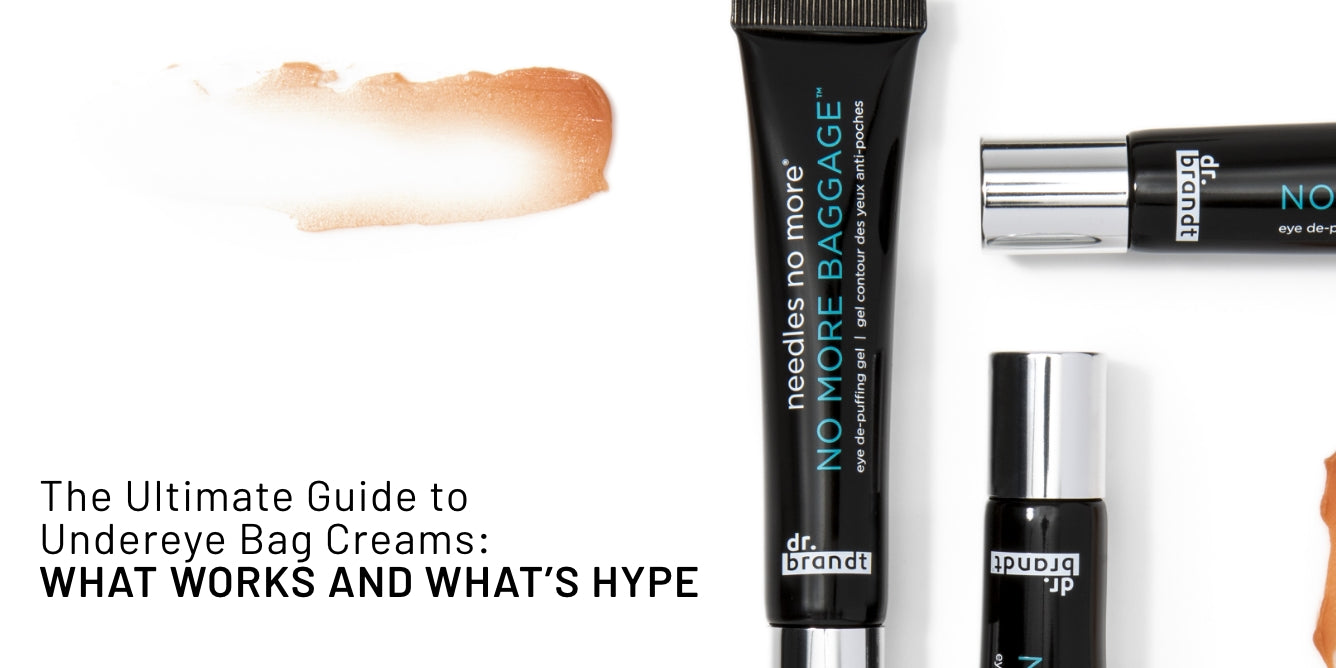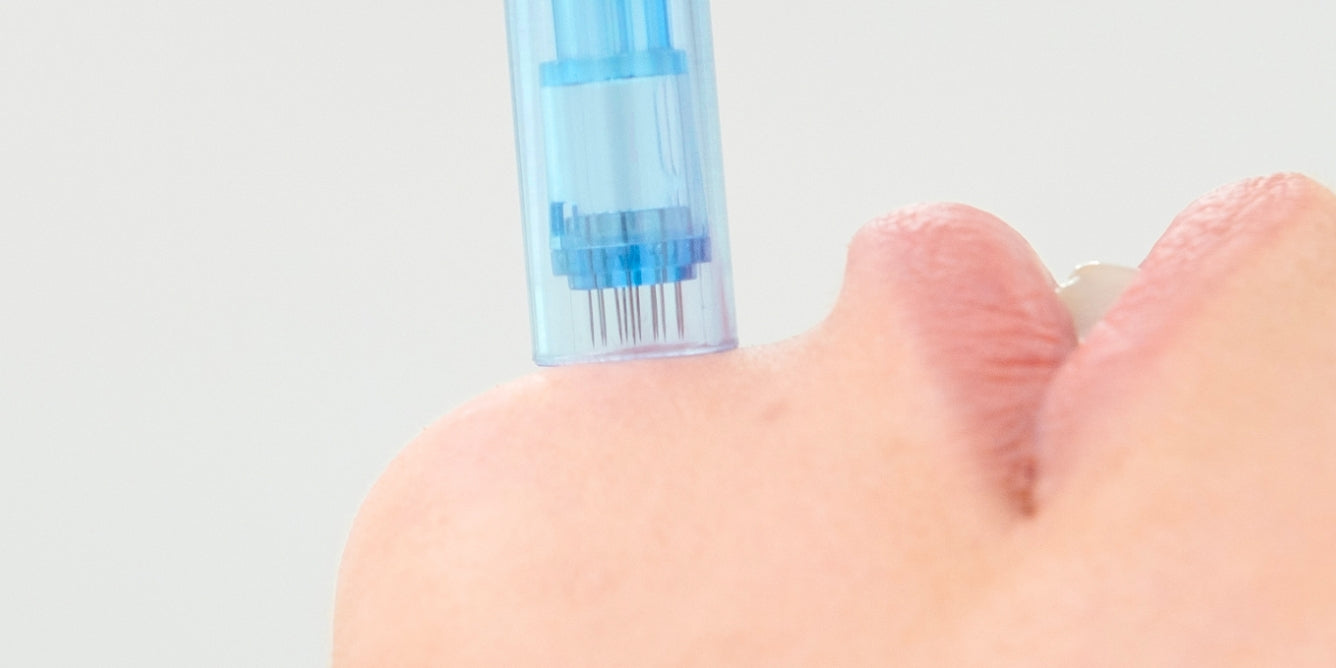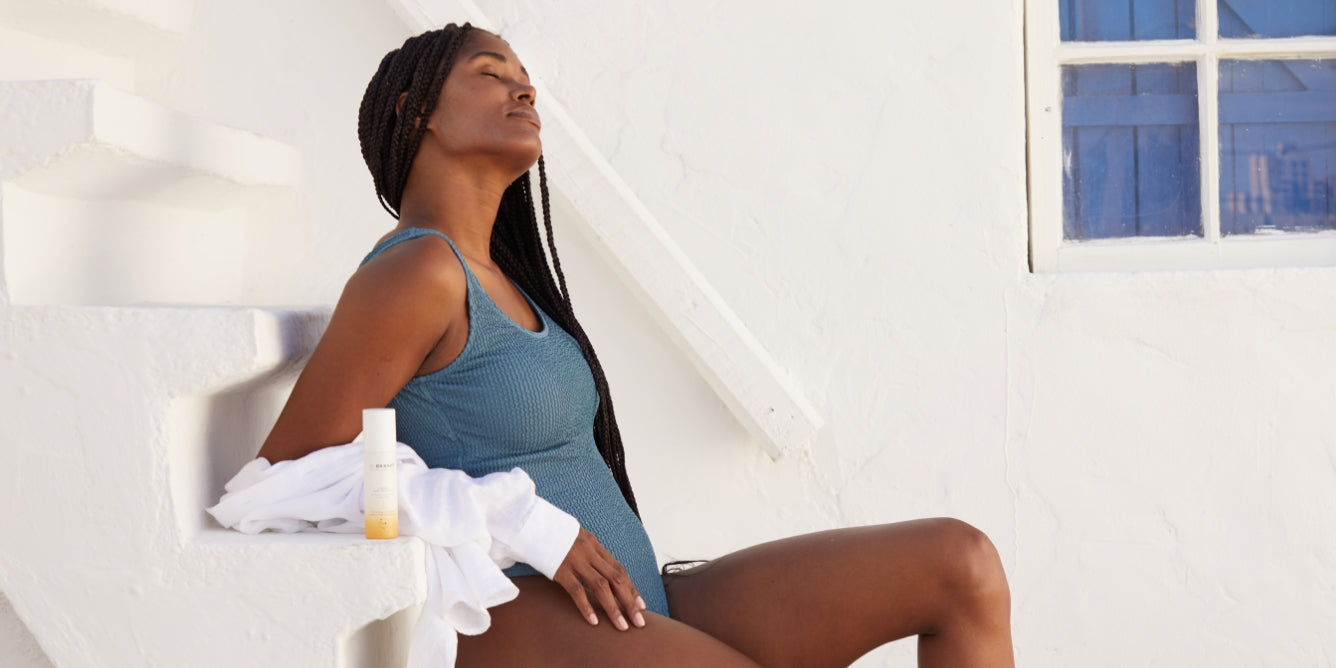
With summer in full swing, warm weather typically brings a whole slew of skin-care changes and questions. Hours spent outside walking, bike riding, exercising and even socializing (from a distance) will likely be at a high this year due to COVID-19’s inefficiency to spread outdoors. With more hours outside comes more preparation and care for your skin.
We checked in with Skin Advisory Board member and renowned dermatologist Dr. Shasa Hu to share the facts about burns, bites, and bruises along with tips and tricks on how to tackle these skin concerns and keep your skin in tip top shape this summer.
BURNS:
Our skin’s sensitivity to sunlight is genetically predetermined by our skin color, hair color, eye color and the ability of our melanocytes to produce melanin in response to ultraviolet (UV) exposure. Overall lighter skinned and lighter hair colored individuals are more likely to burn from sunlight compared to those with darker skin and dark natural hair color. Along the spectrum of Fizpatrick phototype, which is a rating system that describes a person’s sensitivity to sunlight, people who never tan but always burn upon sun exposure are classified as having Fitzpatrick skin Type I, and they usually have very pale skin at baseline. People with Fitzpatrick skin Type II tend to have white, fair skin and burn easily and rarely tan, and so on. You can see the Fitzpatrick skin scale below.

Biologically, people of lighter skin have melanocytes that produce smaller melanin granules that are not as protective against UV damage on cells compared to those with skin of color. The less robust response to UV induced tanning means that the skin gets red, “burnt” or sun damaged from just a small dose of sunlight. Sunburn or that beef red and puffy skin to even blistering of skin we get from unsafe amounts of sun exposure reflects cellular damage in the top layers of our skin induced by UVB. On the other hand, tanning without sunburn, even though it is not as painful or uncomfortable as a sunburn, is also a form of sun damage.

Sun tan is typically caused by cellular damage to deeper layers of our skin from UVA rays. So really, there is no safe sun tan. Sunburn is bad but tanning of the skin is also an indicator that your skin has gotten too much sun. In the long run, both sun burn and sun tan speeds up skin aging and increases your risk for skin cancer. Because of the well documented detrimental effects of UVR on our skin health, there is definitely an increased awareness on sun safe behavior. Sun safety campaigns at national level or large community level have led to major improvements in behavior. For example, Australia has been extremely successful with the Slip Slop and Slap campaigns launched in 1981.
The campaign has made sun behavior widely practiced and accepted in Australian households by encouraging people to slip on a shirt, slop on sunscreen and slap on a hat whenever they’re out. Researchers have attributed the 5% decrease per year in melanoma cases in young people since the 1990s to the success of the sun safety campaign and behavior change among young people.
PREVENTION
The best way to prevent sunburn is to practice sun safe behavior every day, even when you’re not expected to spend time outdoors. For most people, sun safe behavior includes applying an adequate layer of SPF30 or higher, broad spectrum sunscreen or sunblock to all exposed areas, reapplying every 1-2 hours when outdoors or with rigorous physical activity, wearing a wide brim hat, wearing UV filtered sunglasses, and be smart about avoiding outdoors during the peak hours of UVR between 10-3pm and seeking shade whenever possible.
For people with very sensitive skin, especially those with Fitzpatrick type 1 and type 2 skin, wearing long sleeve clothing with UPF (UV protective factor), and limiting the amount of direct sunlight exposure may be necessary. As we all know, sunscreen and sun shirts are not foolproof. People often get sunburned when they forget to reapply or reapply enough sunscreen when they are out on the beach or busy with sports. When you apply sunscreen, it is important to cover the top of the ears, the back of your neck, the back of hands and feet as those areas are often overlooked. Lastly, our lips can also get sun blisters, so it is important to apply lip balm with SPF when you are outside.
You can also alleviate your skin of all types of skin discomfort with our new Cool Biotic!The best way to keep it cool and fresh is by keeping it in your skincare fridge. Check out how we paired our favorite product with our favorite Cooluli fridge :

TREATMENT
Right after a sunburn, avoid any more sun exposure and stay in cool, air-conditioned space if possible. To reduce pain, swelling and inflammation, the most effective treatment is taking NSAIDS (Motrin, ibuprofen, Advil, etc.) if you don’t have known allergy or other medical conditions that prevent you from taking NSAIDS for the next few days. Applying natural aloe vera gel (or ones without any alcohol or added fragrances) will help to soothe the burning sensation. It is also helpful to stay hydrated while your skin recovers from the sunburn.
As your skin goes through the stages of healing from sunburn - redness, swelling, pain to peeling, it is important to avoid direct sun exposure, and keep skin moisturized to help with the re-epithelization process. A fragrance-free lotion or cream applied twice a day starting right away the sunburn will help. Chilled cucumber slices can calm sunburned areas on your face as you recover. Lastly, it is important to maintain hydration by drinking at least 8 glasses of water when you get a sunburn.
BITES
Getting attacked by mosquitoes can totally ruin a nice summer evening. Yes, the old wife’s tale holds some truth. Some people’s blood tastes “sweeter” to biting insects like mosquitoes. Research has found that those with type O blood are more prone to bites, compared to those with type A or B blood. But the reality is that all of us are at risk for bites if we are in a humid, warm climate, especially if there are bodies of still water or wooded vegetation around us. Some of us may even have “allergy” or hypersensitivity to mosquito bites, when we get blisters or very swollen, red and extremely itchy bumps from bites. The exaggerated reaction to bites represents underlying allergies to chemicals and enzymes from mosquito saliva transmitted through biting.

PREVENTION
Prevention of mosquito bites is important: not only we can prevent those pesky itchy bites, we can also prevent serious diseases such as Dengue fever, Zika virus, West Nile Virus transmitted through mosquito bites. For most situations, carrying a bottle of insect repellent, spray and re-spray exposed body areas (except the face) every couple hours is enough to prevent most mosquito bites. However, for camping or hiking in heavily wooded areas, wearing long sleeves, long pants, socks to minimize exposed skin, and sometimes even wearing clothing treated with repellents such as permethrin, may be needed to prevent bites.
There are quite a few active ingredients that are effective insect repellents. DEET (diethyltoluamide) remains the most popular bug spray ingredient due to its effectiveness at protecting from ticks, mosquitos, other bugs, and all the diseases they carry. A worthwhile alternative to DEET would be picaridin and permethrin. These worthwhile alternatives to DEET would be picaridin and permethrin. These ingredients are less toxic but likely just as effective at repelling bugs.
TREATMENT
Most mosquito bites resolve on their own over 7-10 days, but the itching, burning, and inflammation produced by bites can be very bothersome. Scratching the bites can lead to skin abrasion, infection and scarring. Cortisone cream, topical Benadryl lotion, Calamine lotion (which has zinc and ferric oxide) can be used to reduce itching and discomfort. For more severe itching, you may consider taking oral antihistamine as long as you’re aware of potential drowsiness from the oral antihistamines. For people with allergies to mosquito bites, a prescription strength topical steroid may be needed to prevent blister formation. Aloe Vera or a light moisturizer can also help the bites to feel better.
BRUISES
Cuts and bruises are probably more common in summer time because we are outside more and doing more activities. Kids often come back from summer camp with bruises or marks from running around or playing sports. Most people, kids and adults, don’t recall how they have gotten the bruise, so seeing a large patch of blue/ green can be worrisome. Rest assured, most bruises are completely harmless, and larger bruises may take 2-3 weeks to completely fade away. For kids, it is important to teach them the basics of safety practices in sports/ recreational activities, such as wearing helmets while biking or shin guards while playing soccer. Protective clothing is not very practical during hot summer months.

TREATMENT
Once a bruise is formed, the best thing to do is to prevent re-injury to the same area. As long as the skin is intact, a bruise will fade away with minimal scarring. If the skin is cut or open, then it is important to clean the area with alcohol, or water and soap, keep the cut covered with a topical antibiotic ointment and occlusive dressing such as BandAid until the area completely heals. It is also important to keep cuts/ abrasions away from sunlight to minimize discoloration as the skin heals. Topical arnica gel may speed up the resolution of a bruise, but the published studies on this have been inconclusive.




Leave a comment (all fields required)